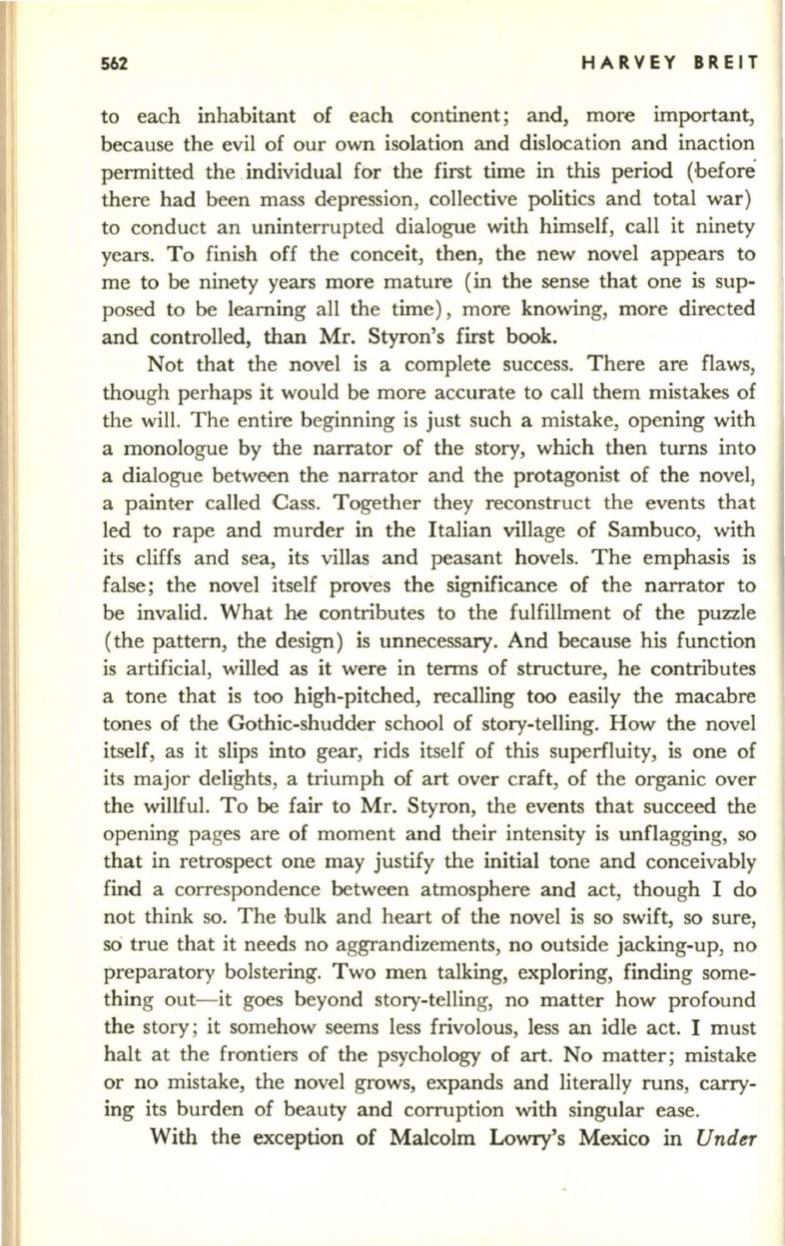
562
HARVEY BREIT
to each inhabitant of each continent; and, more important,
because the evil of our own isolation and dislocation and inaction
permitted the individual for the first time in this period (before
there had been mass depression, collective politics and total war)
to conduct an uninterrupted dialogue with himself, call it ninety
years. To finish off the conceit, then, the new novel appears to
me to be ninety years more mature (in the sense that one is sup–
posed to be learning all the time) , more knowing, more directed
and controlled, than Mr. Styron's first book.
Not that the novel is a complete success. There are flaws,
though perhaps it would be more accurate to call them mistakes of
the will. The entire beginning is just such a mistake, opening with
a monologue by the narrator of the story, which then turns into
a dialogue between the narrator and the protagonist of the novel,
a painter called Casso Together they reconstruct the events that
led to rape and murder in the Italian village of Sambuco, with
its cliffs and sea, its villas and peasant hovels. The emphasis is
false; the novel itself proves the significance of the narrator to
be invalid. What he contributes to the fulfillment of the puzzle
(the pattern, the design) is unnecessary. And because his function
is artificial, willed as it were in terms of structure, he contributes
a tone that is too high-pitched, recalling too easily the macabre
tones of the Gothic-shudder school of story-telling. How the novel
itself, as it slips into gear, rids itself of this superfluity, is one of
its major delights, a triumph of art over craft, of the organic over
the willful. To be fair to Mr. Styron, the events that succeed the
opening pages are of moment and their intensity is unflagging, so
that in retrospect one may justify the initial tone and conceivably
find a correspondence between atmosphere and act, though I do
not think so. The bulk and heart of the novel is so swift, so sure,
so true that it needs no aggrandizements, no outside jacking-up, no
preparatory bolstering. Two men talking, exploring, finding some–
thing out- it goes beyond story-telling, no matter how profound
the story ; it somehow seems less frivolous, less an idle act. I must
halt at the frontiers of the psychology of art. No matter; mistake
or no mistake, the novel grows, expands and literally runs, carry–
ing its burden of beauty and corruption with singular ease.
With the exception of Malcolm Lowry's Mexico in
Under


